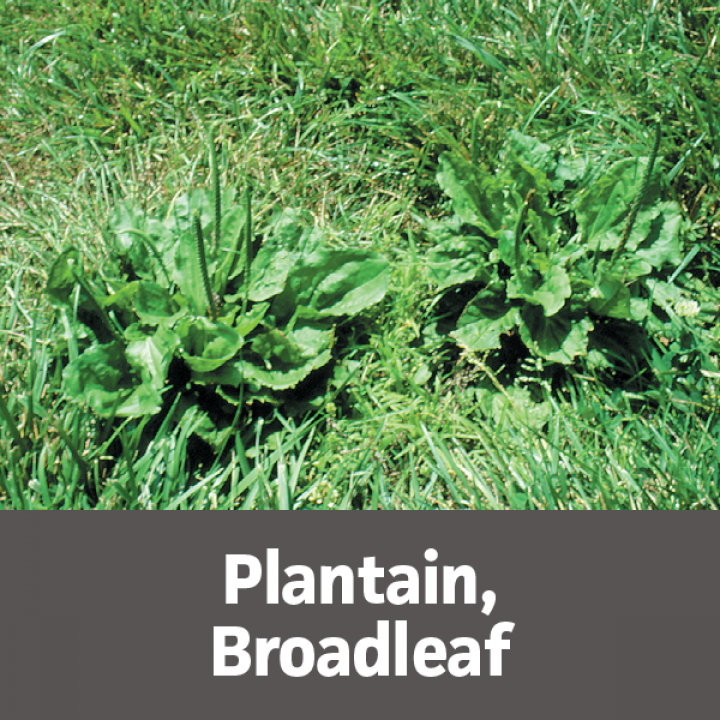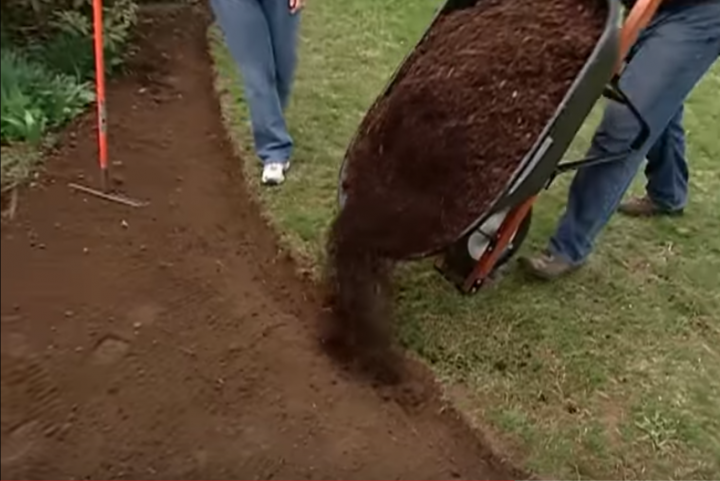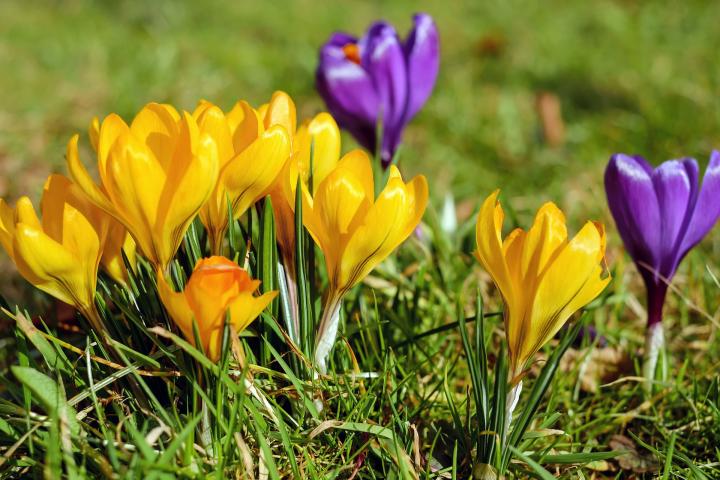No matter your weather, this is peak time for spring yard cleanup! From pruning to crabgrass prevention, here are 10 tips to cover all you need to know now. There’s a right way to care for your yard, lawn, and garden beds.
1. PRUNE IN WINTER AND EARLY SPRING
If you haven’t already done so, cut off any broken or badly disfigured branches caused by winter’s snow and ice in late winter.
Unwanted lower branches on all evergreen shrubs and trees should also be removed in late winter.
Most shrubs and trees are pruned in late winter or early spring but not all. Got flowering shrubs? When to prune a shrub depends mostly on when it blooms and whether it flowers on growth produced in the same or previous years.
- Prune summer-flowering shrubs hard at end of winter or very early spring BEFORE any new growth starts! They form their flower buds on “new” wood (i.e., wood that will grow this spring). Examples include butterfly bush, smooth hydrangeas, panicle hydrangeas, and roses.
- Prune spring-flowering shrubs after spring flowers fade. Since they bloom on the growth of previous season (“old” wood), you will be cutting off their buds and flowers if you prune too early. Examples are: azalea, forsythia, mophead hydrangeas, lilacs, and wisteria.
2. CLEAN UP LEAVES—GO EASY
Even if you cleaned up some leaves in the fall, there are many trees (such as oaks) that shed leaves (and broken or fallen branches) over the winter and well into spring. Now let’s not go crazy as if we have to clean up every single leaf off our lawn to compete for the neighborhood beauty pageant. A little leaf litter helps our pollinators and wildlife survive the winter.
Remove any debris or heavy piles of leaves or any layers of leaves. This invites mold and disease and decay. However, don’t rake into wet ground. It’s best to wait until temperatures are reaching the high 40s or the 50s. If you have a compost pile (or want to start one!), add those leaves to the pile. Otherwise, just mow any thin layers of leaves in with the season’s first cut, and they’ll also break down and add organic matter and nutrition to the soil.
If you have perennial beds, wait to cut down those spent perennial stems until the weather has definitely warmed and it feels like spring is here to stay. So many beneficial insects (ladybugs, native bees) and predators (lacewings, parasitic wasps) are still “hibernating” in leaf litter or hollow plant stems. They will “wake” up as the weather warms and daylight increases. If you just can’t stand to wait, cut those spent plant stems and simply set them at the edge of your property or the woods. The native bees will thank you!
3. ADDRESS AGGRESSIVE WEEDS—EARLY!
Deal with weeds in early spring. Invasive or aggressive weeds will only get worse as daylight hours increase during summer. As they grow, their roots will strengthen and they will be very difficult to pull out.
The best way to minimize weeds in your lawn is through good cultural practices:
- Do not mow too short
- Allow mow clippings to return to the lawn
- Skip spring fertilization
- Do not over- or underwater
- Devote some of your lawn to wildflowers
You may also choose to apply an organic or traditional “pre-emergent” herbicide. The best time to apply a pre-emergent is when the temperature in the top 1 inch of soil has been 55 degrees F for five consecutive days (often in March and April). Once the soil temperatures reaches 55 degrees, annual weed seeds begin to germinate. Once you can see weeds in your lawn, a pre-emergent herbicide is not effective.
If you see weeds emerge in the spring, spray a post-emergent herbicide (traditional or organic). Wait to apply broadleaf weed killer until late spring, after the weeds have flowered. (Often this is 6 to 8 weeks after a pre-emergent herbicide.) Weed killers are most effective when applied evenly over the entire lawn.

See common lawn weeds to identify what’s most common in your yard!
A word on dandelions: A common perennial weed in early spring, dandelions can also be dug out by their roots—or, just enjoy their yellow blooms. If you are maintaining a yard without chemicals, you could always harvest dandelion greens when young and tender! Note: Snap off dandelion heads before they seed if you don’t want more dandelions next year.
4. SEEDING BARE PATCHES—CAREFULLY
Winter can reveal some damage to your yard from pets, snow plows, and traffic. You may wish to re-seed some spots.
The conundrum is: If you’re using a pre-emergent herbicide in the spring for crabgrass, it’s nonselective and will deter grass seeds from growing, too; this is why fall is a better time to seed grass. However, if you just can’t stand those bare spots, try spot-seeding bare patches as early as possible (by April) before you apply any pre-emergent for crabgrass control.
Give seeds enough time to germinate and somewhat establish. If this is not possible, don’t skip the pre-emergent weed control. It is better to take care of the bulk of your yard; wait until fall to perform any turf repairs.
Before seeding, use a steel rake to scuff up the area. Loosen the soil. Scrape some compost into the area. Sprinkle grass seed on the spot. (Use a sun/shade premium mix, unless the area’s heavily shaded.) Keep the soil moist. Cover the seeds with straw matting or another material. Even grass clippings will do. You just want to cover the spot with some sort of material to hold seeds in place.
If you’re then applying pre-emergent herbicides, we would also fertilize any spots in the lawn early; in a few weeks shoots will grow and fill in the brown spots. If the brown patches are too big or you just can’t wait, sod is the better option.
5. RAKE AWAY THATCH—NOT ‘TIL DRY
It’s too early to talk about thatch but we need to do it now because many folks do it way too early. When we say “thatch,” we’re talking about the matted areas which have died out; they can harbor snow mold. You don’t want more than ½-inch of thatch on the ground. A good raking will promote air flow throughout the grass, prevent disease, and help germination. It’s essential the ground and grass is dry enough or you will do more harm than good, raking up grass seeds. Rule of thumb: If footprints remain after walking, then it’s still too moist. That said, rake as soon as it’s dry and the grass is still brown; raking too late will harm healthy roots.
6. DO NOT FERTILIZE TOO EARLY.
The best time for fertilizing is autumn; this helps build turf given grass plants the food that they need to build up their root systems.
However, many folks will also fertilize in the springtime. Do not make the mistake of fertilizing too early in the spring. This will divert the plant’s energy into leaf development too soon. Instead, the grass needs phosphorus for root development.
The best time for the first spring application in most regions in late spring (around May), just as the grass is beginning to grow green and you want to promote a lush, green lawn. Fertilize before the heat of summer begins and after the grass is growing nicely. A good feeding of ¾ to 1 pound of fertilizer will allow the plant to rebuild its food supply.
When you fertilize grass in the spring, apply lightly. Heavy nitrogen (N) fertilization is not good for the grass and can also lead to disease problems. A healthy lawn is a light, bright green color; if it’s darker, that means too much nitrogen (which will also run off into our water supply). Remember that you can always start lightly and add more until you get the right color.
Also, consider a mulching mower—which returns grass clippings back to the soil. This saves you time and energy, while also improving the condition of your lawn. Since grass clippings contain up to 90 percent water, the clippings dry up very quickly. It’s almost as if the grass clippings disappear. Plus, this returns 25 percent of the nutrients to the soil—a fantastic fertilizer.
7. LOOSEN THE SOIL—IF IT’S COMPACTED
Do you have flower beds? After the winter, the soil in your garden beds may be completely compacted. Remove thick layers of leaves which are covering evergreen ground cover beds. Thin layers of leaves in your beds can be left alone and simply mulched over later. They’ll break down and add organic matter to your soil. Then, loosen the soil to help oxygen reach the plants’ roots. You can use hand tools for small areas, but larger areas may benefit from tilling.
A grass lawn also gets compacted soil, especially if people walk on it. If you see patches of moss or signs of decline, we would advise aerating the lawn; this allows water and air to reach the root zone faster, resulting in new growth and increased root development. However, this is usually best done in the fall. Plan to rent a lawn aerator at your local home improvement store. If you aerate in the spring, it is important to core aerate before the soil temperature reaches about 55 degrees F. As it warms, you’re simply making room for, and inviting, aggressive weed seeds to find a home.
Moss can also mean that your lawn is getting acidic. If you are growing grass, the goal is a neutral pH. Get a soil test (often free or done for a small fee through your local County Cooperative Extension office). If your lawn is acidic, you’ll need to apply lime to it; the Extension folks can advise you.
8. REDRAW BEDS—WITH A GARDEN HOSE
You may wish to redraw the boundary between your garden beds and grass in springtime. Wider beds mean less lawn care, too. Here’s a simple way to do it yourself: Use a garden hose to mark out a nice line for your garden beds. Then, along this bed line, take a sharp metal edger and drive it into the ground as deep as it will go. Dig all along the hose line and then remove the grass that’s there, creating a nice bed. Once done, fill up the bed with 2 to 3 inches of mulch (pine bark is a good choice)—or you’ll just get a bed of weeds! Then you’re ready to transplant or plant perennial flowers.

9. MOW GRASS—BUT NOT TOO SOON
Mow the lawn when the grass level reaches 2 to 3 inches tall. The lawn needs time to recover after winter. However, if the grass grows too long, it shades the roots, which allows fewer weed seeds to sprout.
If you use a traditional lawn mower, spring is the time to clean (or replace) the filter and spark plugs. It’s important to sharpen the mower blade every month or two for a clean cut. When you just rip grass and leave it with open cuts, you leave your yard susceptible to fungi and disease. See more about lawn care.
If you’re interested in alternative mowers, consider a reel mower or an electric mower as a more environmentally-friendly option. These mowers work best if your property is one-third of an acre or less. It’s important to mow your grass regularly, as it’s much more difficult to cut the grass if it gets way too tall (as many of us have experienced firsthand!).
Of course, we have to mention that there are alternatives to grass as well! Many folks are starting to use more ground cover plants (such as sedum), walkways, and wider flower beds. There’s also a growing trend to add vegetable garden beds or to integrate edibles (herbs, vegetables, fruit) into your front yard. See more about edible landscaping!
10. MULCH—CAREFULLY
As with leaf removal, don’t mulch too early. Be patient. There are also many beneficial insects and pollinators (e.g., soldier beetles, native bees, hummingbird clearwing moths) who overwinter in your garden, and smothering your ground with mulch is not helpful. Just hold off on mulching chores until the soil dries out a little and the weather warms.
We mulch once we have edged our beds and trimmed back dead branches on our shrubs. Then add your mulch (or, replace your old mulch). We prefer a heavy mulch, such as hardwood bark mulches, over dyed brown wood chips. They are higher-quality, last longer, and look better. Read more about the benefits of mulching.
Not everything on this list is necessary for every yard, but we think that we’ve covered most of what you need to know for spring!
Source / The Old Farmer’s Almanac

